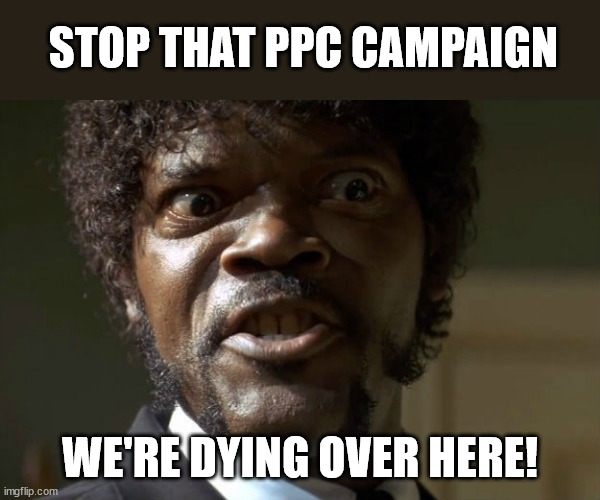So you hear someone somewhere saying “We’re about to do a domain migration of our site for SEO purposes” and you start wondering why? Why would you switch domains after all that link building, social posting, advertising and so on? Wouldn’t you lose all that SEO capital by switching domains? What will happen to all the social signals? And how do you know that domain migration will bring you any benefits?
Well, to answer this question, let’s break it down to its constituents and address each one individually.
What Is A Social Signal, Really?
Anytime someone shares your post on FB, or you tweet a link, or you post an article on Pinterest, folks say it’s a social signal. But… are such signals any good?
Signals like these aren’t all that important and Facebook has been pushing back on this for almost 2 years as people started pushing duplicate posts only so that they’d get “more signals” which is a misunderstanding on the poster’s side, to put it politely.
But when a person clicks on the FB post and lands on your site, now we talk business. Google tracks these clicks/visits/signals, and more or less it’s a statistically valid thing to be concerned over.
If I’m pressed to make an analogy of social signals to something of the past, I’d say that social is the link building of today. Naturally, Social is A LOT more than link building, assuming that social marketing is handled correctly, but for the sake of SEO numbers, let’s just boil down Social as link building activity.
Switching Domains For SEO Reasons
Domain migration for the sake of SEO makes perfect sense if in the past there has been a lot of gray/black hat SEO stuff going on. Sometimes, there’s so much black hat SEO done for a site that it’s easier to switch/rebrand instead of trying to fix the mistakes. Folks that want fast results and aren’t concerned with long-term success stick to such black-hat (i.e., “illegal” or “unethical”) SEO… but that comes back to torment you very soon, as Perry implies. It’s like bad karma or fat. Once you get it, it’s hard to shake it. (Feel free to correct me on the fat thing though).
There are literally thousands of businesses out there that suffer bad karma from previous SEO activities. In a sense, SEO has become similar to plastic surgery. Sure you can have a nose job in a local clinic or what have you… but if you don’t want your nose to fall off down the road (sorry M.J.) you’d better find someone who really knows their stuff.
This means knowing a thing or two about SEO, and most importantly, to have a reliable community where you can ask this question, and get solid answers from people with a proven track record and with other people who can attest to that.

How To Do Domain Switching – The Proper Way
As in the past 12 months, my team and I migrated several sites with a total of some 50.000 URLs, I think I’ve earned the right to talk about this at length. But I won’t do that here. Here, let me just point out that domain migration is a lot more than copying all your content onto a new, squeaky clean domain.
The first thing to do is consider the shortcomings of your existing site. Since you will be moving all your content onto a new domain, now’s a perfect chance to fix any Information Architecture issues such as:
- Date-based URLs. Seriously, WP started as a blogging platform, but that doesn’t mean you should stick to the year/month/date URL structure. It adds no value, and you lose a perfectly good chance to put some keywords in the URL. Not to mention that date-based URLs tend to get outdated very quickly. Nobody wants to read a post written 5 years ago.
- Structure depth. I’ve seen sites that have 6, 7, 8 levels in their URLs. So the text is buried so deep in the site structure that Google thinks it’s probably not that important at all. But when ALL your blog posts are buried so deep, you have a massive problem. Sticking to 2-3 levels structure is best for most sites out there
- Duplicate posts. One of the most misunderstood SEO concepts is the duplicate content issue. Folks think it’s about a text that’s published somewhere else that you decided to copy-paste on your own site. This is plagiarism! And sometimes subject to copyright laws. Fear that, instead of fearing duplicate content, which is actually one text published twice on your site. Or… the same page with two different URLs. Migrating a site is a good time to do some house cleaning.
- New Information Architecture (aka Navigation tree). Since you’re moving the site, you should build a proper navigation structure before you start the migration. In most cases, this means consolidating weird categories and sub-categories so that you end up with say 10 major categories with no more than 5 sub-categories of which each is limited to about 2-5 other sub-sub categories. Once you have the map of the site planned out, then you can migrate content.
- Redirection table. With the domain migration, you’re basically a new website in Google’s eyes. In order to move all your SEO capital onto the new website, you need to know which URL on the old site goes where onto the new website so that you can tell Google where all that content has moved, page by page. There is a sleek procedure about this that keeps almost the entire SEO capital but that’s another story for another day.
As there’s plenty of data-driven decision making, a proper site migration should be accompanied by a full site audit. This will help you understand what is going on on your existing site, what are the challenges/problems, and what you’ll need to do in order to fix all that.
I’m just scratching the surface here, but the point here is to show that site migration for SEO purposes sometimes is a very good idea… but it’s a process that requires a lot of thinking, analyses, and some hard work.
What Can You Expect From A Proper Site Or Domain Migration
The results I’ve seen only in the past handful of site migrations is that we’ve helped site owners boost their ranking and traffic dramatically. A solid site/domain migration in one instance helped a site increase in ranking from #77 (GWT data) down to #25. There was no change in the content on the site. We just took the existing content and properly structured the site. That’s all.
Another good illustration of a proper site/domain migration is the boost in traffic. Within 3 months after migration, the site’s traffic quality jumped significantly. The visitors count doubled. The Time on Site increased by about 30%. The Pages per Visit also jumped some 65%.
From the latest migration I’ve seen that the rework itself bumped the lead generation by about 30%.
So yes, doing domain migration is sometimes a very good idea. But unless you know exactly what you’re doing and why…. you may be bringing your site in danger… as I’ve recently seen in one domain migration that was poorly executed and the new site ended up with several thousand error notes in Webmaster Tools. That’s like hiring an expensive assassin to kill you. Money not well spent.






